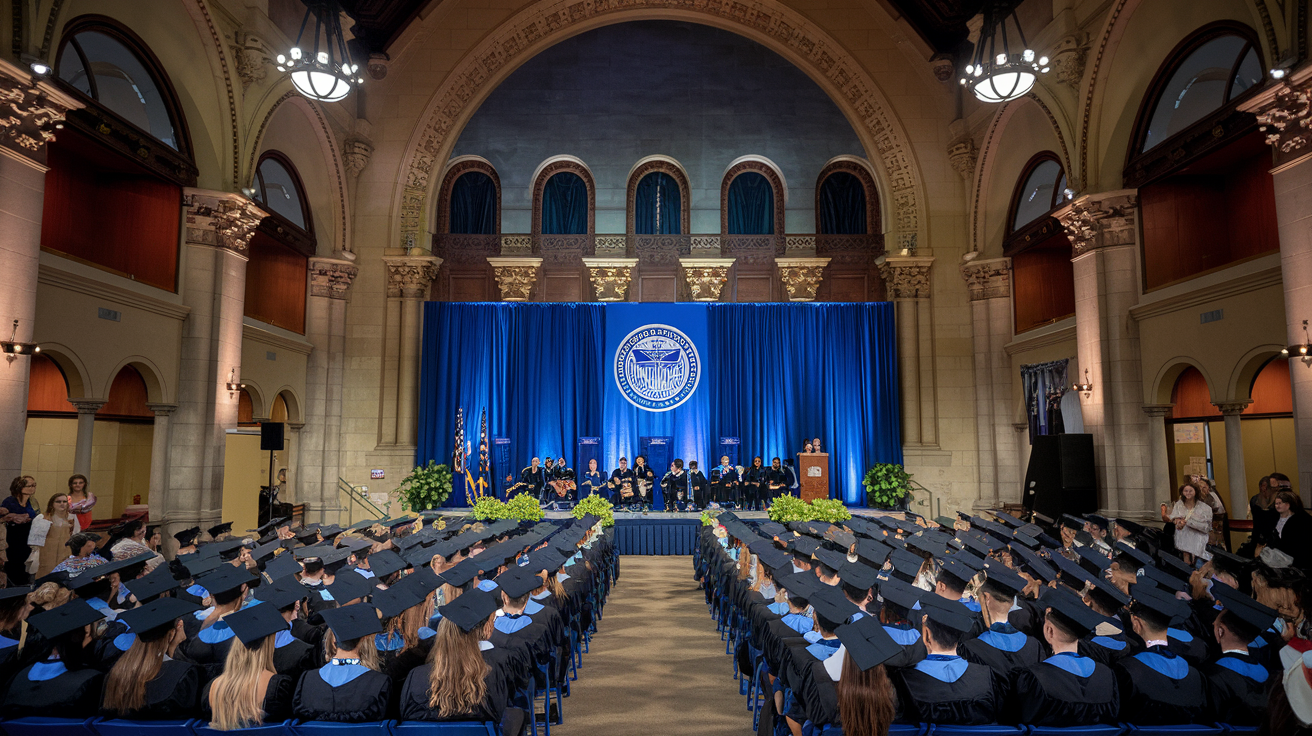15% OFF + FREE 5 X 7 Photo Frame VALID THRU SUN 12/21/25 PROMO CODE: HOLIDAY15
Enter HOLIDAY15 to get 15% OFF + FREE 5 X 7 Photo Frame OFF.

Graduation ceremonies in the U.S. have a rich history, rooted in English traditions since the colonial period. Beginning as modest church gatherings, they evolved into grand events by the 18th century, featuring processions, music, and notable speakers.
By the 19th century, cap and gown became standard, adopted from medieval European customs, and by the 20th century, standardized regalia signified academic achievement levels.
Today's graduation ceremony balances tradition and innovation, incorporating modern and online elements while maintaining core symbolism. The cap and gown represent academic excellence, and the tassel's movement signifies evolving into a graduate.
Ultimately, these ceremonies celebrate academic dedication, hard work, and new beginnings, honoring graduates' achievements.
This blog explores the history and evolution of graduation ceremonies in the United States, examining their traditions, symbolic elements, and cultural diversities.
The modern graduation cap and gown originated in medieval Europe, expressing scholarly achievement. The cap represents recognition and achievement, while the gown signifies unity among scholars.
Today, academic regalia evoke pride, tradition, and accomplishment, honoring graduate's hard work and educational milestones.
Originating from the Greek-Latin phrase "diploma,” means "double-folded paper.” Providing the physical diploma, a tangible symbol of academic achievement, began in the mid-17th century.
Harvard College pioneered the tradition of awarding diplomas to graduates on September 23, 1642. Initially handmade and illuminated, modern diplomas now feature intricate designs, seals, and signatures, serving as an enduring testament to a graduate's accomplishments.
"Pomp and Circumstance," composed by Edward Elgar in 1901 for King Edward VII's coronation, first played at America’s Yale University's 1905 graduation ceremony.
Its majestic, stately tempo has become an iconic American graduation tradition, showcasing distinction, diligence, and transition.
The tassel switch, a timeless graduation tradition, symbolizes a student's transition from candidate to graduate.
Initially worn on the right side, the tassel is moved to the left during the commencement ceremony, signifying the student's accomplishment while celebrating new beginnings.
Ivy League universities boast distinctive graduation customs. The U.S. Naval Academy popularized tassel-switching and cap-tossing, while West Point graduates wore class rings featuring gemstones and engravings.
West Chester University honors African-American graduates with Kente cloth stoles. Catholic schools hold Baccalaureate Masses for blessings and reflection.
Some schools, like Bergen County Academies, start traditions early, with seniors painting university logos on hallway windows before Graduation Day, showcasing school spirit and academic pride.
In the United States, graduations are celebrated at various educational levels, from kindergarten to university.
The American Council on Education (ACE) guides academic attire, typically consisting of square mortarboards with tassels and robes. A separate hood is traditionally worn for higher education ceremonies.
In some regions, after graduation, families host parties showcasing the graduate's accomplishments, photos, and memorabilia. Guests offer cards, gifts, and wishes to commemorate the milestone.
US universities have unique graduation customs to make the ceremony memorable, which includes:
Graduation ceremonies have transformed over the past century.
From subdued 1930s events focused on invocation and benediction, they have become larger, celebratory gatherings hosted in stadiums and arenas. These events feature varied senior activities, senior camera days, and elaborate parties.
Advances in technology and transportation have driven these changes, reflecting society-centered shifts and increased educational accessibility.
Graduation ceremonies have evolved significantly due to cultural shifts, combining modern elements with meaningful traditions.
The cap and gown, honor cords, hoods, and tassels hold symbolic significance, while the cap toss and flowers express celebration and appreciation.
The University of Florida and other universities are leveraging technology to enhance the graduation experience.
They include special hashtags for social media sharing, QR codes to display graduates' names and photos on big screens, and smartphone scanning for instant alumni association membership.
Additionally, they offer online degree programs that enable students to earn degrees remotely.
American graduation ceremonies blend timeless traditions with modern innovations. Customs like the cap and gown, honor cords, and "Pomp and Circumstance" celebrate academic achievements.
As society evolves, ceremonies adapt, incorporating technology and online elements. Despite the change, these traditions endure, celebrating milestones, inspiring future generations, and embodying the essence of commencement.
With continuous improvements and advancements, future graduation celebrations will likely include heritage and innovation.
